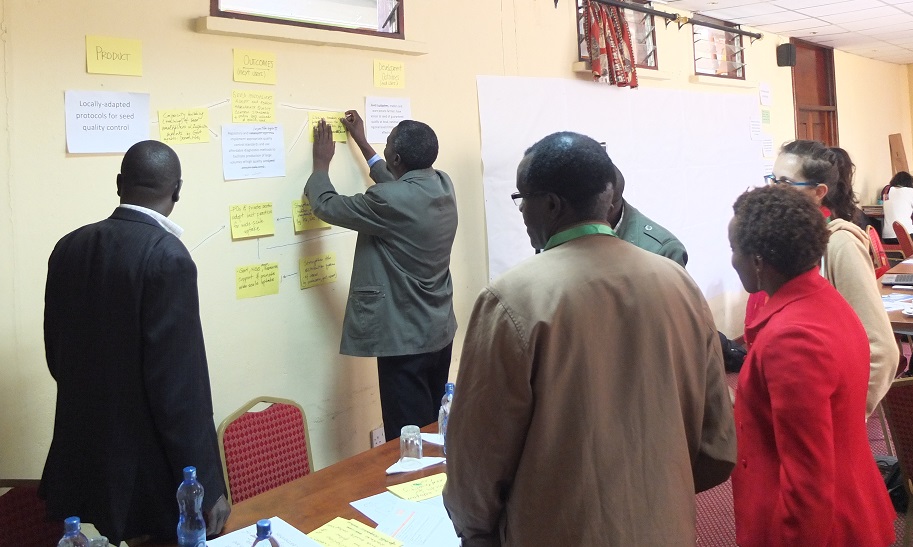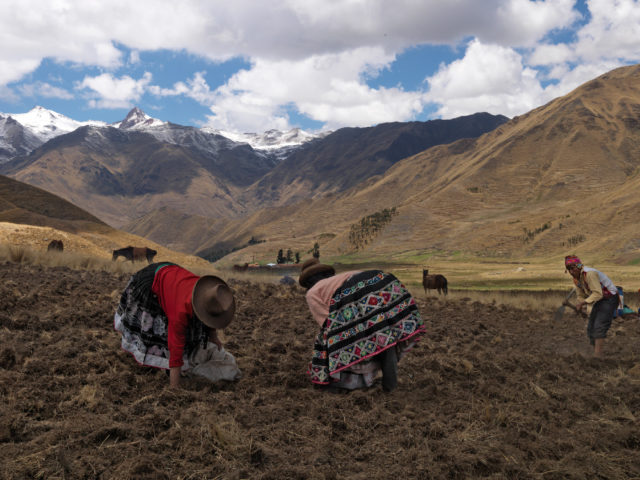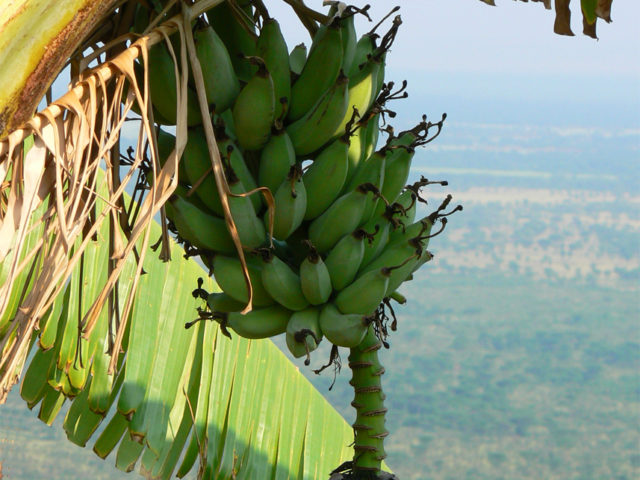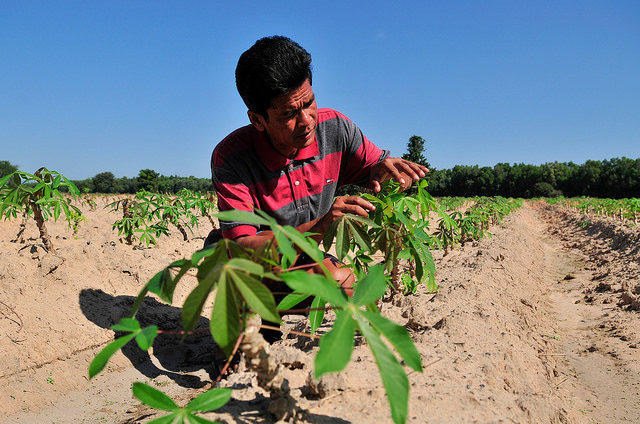We all have a theory of change. Indeed, when we have a big goal to achieve, we think of what we should contribute to change, with who we may team up and which strategy we may use to make it happen. The CGIAR Research Program on Roots, Tubers and Bananas (RTB) is making its theories of change explicit. The next step is to implement Results-Based Management (RBM) to foster the changes RTB’s interventions are supposed to make in the lives of smallholder farmers.
A growing number of research and development organizations around the world are adopting results-based management. As the website of Canada’s Department of Foreign Affairs, Trade and Development indicates: “RBM is not a tool, but rather a way of working that looks beyond activities and outputs to focus on actual results; the outcomes of projects and programs.”
RBM is expected to become the modus operandi at CGIAR Research Centers, as it is embedded in the new CGIAR vision. The management of RTB and its lead center, the International Potato Center (CIP), understand RBM as an integrated cycle to define, monitor and assess programmatic activities together with partners so the end users – the poor farmers who RTB works for – can achieve real benefits, and donors can see the ‘value for money.’
As part of its efforts to reorganize its research agenda, RTB launched a pilot phase in 2014 to introduce RBM across different work packages that are currently reshaping the program architecture. For each of these packages, impact pathways are being designed that allow for a better description of the interventions, a more comprehensive identification of relevant partners, and the implementation of a monitoring and evaluation system (M&E) along the different stages.
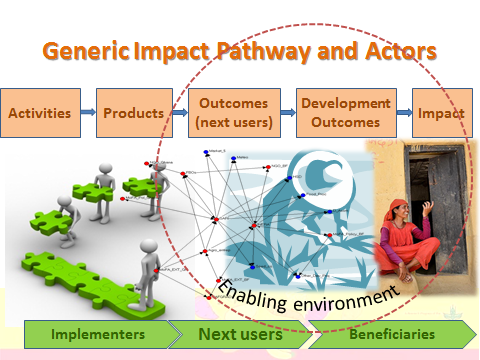
Simplified illustration of an impact pathway – It is usually not this linear, as the different actors (implementers, next users, beneficiaries) can play different roles along the impact pathway.
In the second half of 2014, RTB and partner researchers attended participatory planning workshops to design impact pathways together. The first issue of the new RTB Brief series presents the key experiences and lessons learned from the defining and co-designing of impact pathways for two selected clusters of activity: an initiative to strengthen Seed Potato Systems in Sub-Saharan Africa and an effort to improve Banana Xanthomonas Wilt (BXW) Management in Eastern and Central Africa.
One exercise during the Potato Seed System workshop involved projecting oneself 10 years into the future and reflecting on the goals achieved, before going back to account for what had to be done in order to reach those outcomes. By looking at the big picture, participants were able to identify the specific stages, components and skills required to make progress on the pathway to their goals.
Some participants noted with satisfaction the similarity between the management system they were developing and the requirements of donors in terms of progress indicators and ‘value for money.’ “In the end, it’s all about clearly articulating the objectives, and analyzing and defining what we are going to do to achieve them,” said one potato breeder. “By re-articulating the way we operate and monitor, we are now about to align with what many partners and donors require, in a harmonized and structured way.”
While impact pathways and RBM were fairly new concepts for many participants in the BXW Management workshop, most of them appreciated the methodology and provided valuable inputs to improve the intervention logic by refining products and outcomes and identifying additional partners and scaling opportunities.
In the end, working together to construct impact pathways help everyone involved to get the big picture of what they want to achieve and to work out the details of how they need to work together to confront threats, overcome obstacles, and make a major, positive impact on the ground.
Read the RTB Brief “Co-constructing impact pathways with stakeholders for results-based management”
By Véronique Durroux-Malpartida
